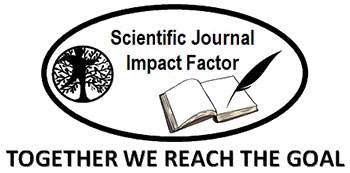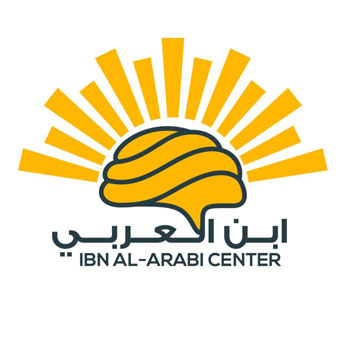تأثير أبعاد ممارسات إدارة الموارد البشرية على الالتزام الوظيفي للموظفين ذوي الخلفيات الثقافية المتنوعة في الشركات متعددة الجنسيات في دولة الإمارات العربية المتحدة
DOI:
https://doi.org/10.56989/benkj.v5i8.1533الكلمات المفتاحية:
إدارة الموارد البشرية ، الالتزام الوظيفي، المغتربون، الإمارات العربية المتحدة، الشركات متعددة الجنسيات، التنوع الثقافي، السلوك التنظيميالملخص
تتناول هذه الدراسة كيفية تأثير ممارسات إدارة الموارد البشرية (HRM) على التزام الموظفين ذوي الخلفيات الثقافية المتنوعة في الشركات متعددة الجنسيات (MNCs) العاملة في دولة الإمارات العربية المتحدة. ونظرًا لأن أكثر من 85٪ من القوى العاملة في الدولة تتكون من وافدين، فإن فهم العوامل التي تدفعهم للالتزام الوظيفي يُعد أمرًا بالغ الأهمية لتحسين معدلات الاحتفاظ بالأفراد والأداء العام في بيئة عمل متعددة الثقافات. تبحث هذه الدراسة في ستة أبعاد لإدارة الموارد البشرية: الاستقطاب والاختيار والاحتفاظ؛ التدريب والتطوير؛ تقييم الأداء؛ الأجور والمزايا؛ العمل الجماعي؛ وأمن التوظيف، وعلاقتها بالالتزام الوظيفي.
واستنادًا إلى نظرية الموارد (RBV)، ونظرية رأس المال البشري (HCT)، ونظرية التبادل الاجتماعي (SET)، اعتمدت الدراسة على منهج كمي باستخدام أسلوب العينة العشوائية الطبقية التناسبية. تم جمع البيانات من 361 موظفًا في أربع شركات متعددة الجنسيات بارزة مقرها في دولة الإمارات. وقد خضعت أداة البحث لاختبارات الصدق والثبات، وتم إجراء التحليلات الإحصائية باستخدام برنامج SPSS، بما في ذلك التحليل الوصفي، وتحليل الارتباط، والانحدار المتعدد.
كشفت النتائج أن كلًا من الأجور والمزايا، والعمل الجماعي، وتقييم الأداء، والاستقطاب والاحتفاظ لها تأثير إيجابي وذو دلالة إحصائية على الالتزام الوظيفي. في المقابل، لم يظهر كل من التدريب والتطوير وأمن التوظيف تأثيرًا ذا دلالة إحصائية. وقد فسّر النموذج نسبة 63.9٪ من التباين في الالتزام الوظيفي (R² = 0.639). وتؤكد هذه النتائج على أهمية تبني استراتيجيات موارد بشرية تراعي الخلفيات الثقافية ومترابطة بالأداء في تعزيز التزام الموظفين، خاصةً ضمن القوى العاملة المؤقتة والتي يغلب عليها الطابع الوافد.
تُسهم هذه الدراسة في إثراء الفهم الأكاديمي لإدارة الموارد البشرية في البيئات غير الغربية والمتعددة الثقافات، كما تقدم رؤى عملية للشركات متعددة الجنسيات العاملة في دولة الإمارات الراغبة في تعزيز ولاء الموظفين ورضاهم واحتفاظهم الوظيفي.
This study examines how Human Resource Management (HRM) practices influence the job commitment of culturally diverse employees in multinational companies (MNCs) operating in the United Arab Emirates (UAE). As over 85% of the UAE’s workforce comprises expatriates, understanding what drives their commitment is essential for improving retention and performance in such a multicultural labor environment. This research investigates six HRM dimensions—recruitment, selection and retention; training and development; performance appraisal; pay and benefits; teamwork; and employment security—and their relationship with job commitment.
Grounded in the Resource-Based View (RBV), Human Capital Theory (HCT), and Social Exchange Theory (SET), the study employs a quantitative approach using proportionate stratified random sampling. Data were collected from 361 employees across four prominent UAE-based MNCs. The research instrument was tested for reliability and validity, and statistical analyses were conducted using SPSS, including descriptive, correlation, and multiple regression techniques.
Findings reveal that pay and benefits, teamwork, performance appraisal, and recruitment and retention significantly and positively affect job commitment. In contrast, training and development and employment security did not show a statistically significant influence. The model explained 63.9% of the variance in job commitment (R² = 0.639). These results highlight the importance of culturally responsive and performance-linked HRM strategies in enhancing employee commitment, especially within temporary and expatriate-heavy workforces.
The study contributes to the academic understanding of HRM in non-Western, multicultural settings and offers practical insights for UAE-based MNCs seeking to improve employee loyalty, satisfaction, and retention
المقاييس
المراجع
Afiouni, F., Karam, C. M., & El-Hajj, H. (2014). The HR value proposition model in the Arab Middle East: Identifying the contours of an Arab Middle Eastern HR model. The International Journal of Human Resource Management, 25(8), 1248–1263.
Alserhan, B. A., Forstenlechner, I., & Al-Nakeeb, A. (2018). Employees’ perception of performance appraisal: A study on UAE public sector. International Journal of Public Administration, 41(10), 796–806.
Aycan, Z., Kanungo, R. N., Mendonca, M., Yu, K., Deller, J., Stahl, G., & Kurshid, A. (2000). Impact of culture on human resource management practices: A 10-country comparison. Applied Psychology, 49(1), 192–221.
Barney, J. B. (1991). Firm resources and sustained competitive advantage. Journal of Management, 17(1), 99–120.
Becker, G. S. (1964). Human capital: A theoretical and empirical analysis, with special reference to education. University of Chicago Press.
Blau, P. M. (1964). Exchange and power in social life. Wiley.
Budhwar, P. S., & Mellahi, K. (2007). Introduction: Human resource management in the Middle East. The International Journal of Human Resource Management, 18(1), 2–10.
Cooper, D. R., Schindler, P. S., & Sun, J. (2019). Business research methods (13th ed.). McGraw-Hill Education.
Farndale, E., Scullion, H., & Sparrow, P. (2010). The role of the corporate HR function in global talent management. Journal of World Business, 45(2), 161–168.
Jawahar, I. M. (2006). Correlates of satisfaction with performance appraisal feedback. Journal of Labor Research, 27(2), 213–236.
Noe, R. A. (2010). Employee training and development (5th ed.). McGraw-Hill.
Ongori, H., & Temtime, Z. T. (2009). The impact of human resource management practices on firm performance in Botswana. African Journal of Business Management, 3(10), 450–455.
Stahl, G. K., Mäkelä, K., Zander, L., & Maznevski, M. L. (2010). A look at the bright side of multicultural team diversity. Scandinavian Journal of Management, 26(4), 439–447.
Subramony, M. (2009). A meta-analytic investigation of the relationship between HRM bundles and firm performance. Human Resource Management, 48(5), 745–768.
التنزيلات
منشور
كيفية الاقتباس
إصدار
القسم
الرخصة
الحقوق الفكرية (c) 2025 مجلة ابن خلدون للدراسات والأبحاث

هذا العمل مرخص بموجب Creative Commons Attribution-NonCommercial 4.0 International License.































 ElDjawda Soft
ElDjawda Soft